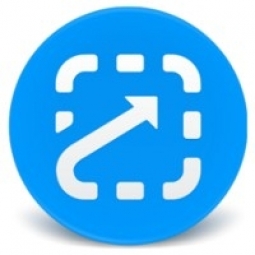Technology Category
- Sensors - Autonomous Driving Sensors
Applicable Industries
- Education
- Healthcare & Hospitals
Use Cases
- Time Sensitive Networking
- Virtual Training
Services
- Training
About The Customer
Baxter Healthcare is a Fortune-500 contact center that assists patients and nurses who use its medical devices. The remote contact center is available 24/7 and supports professionals in vulnerable scenarios as they troubleshoot life-saving medical equipment. Baxter recently acquired a new call center and decided to move the contact center to nearshore (Mexico) from offshore (India). The company was faced with the challenge of launching the new operation in 120 days, hiring and training all new agents and trainers, and updating out-of-date documentation.
The Challenge
Baxter Healthcare, a Fortune-500 contact center, was faced with the daunting task of launching a new operation in 120 days. The company had recently acquired a new call center and decided to move the contact center to nearshore (Mexico) from offshore (India). The director was tasked with launching the contact center in Mexico within the stipulated deadline. The challenges were manifold. They had to hire and train all new agents and trainers, a total of 30 personnel. The operations director and his team had no prior experience with the product or the company they had just acquired. The existing documentation was completely out of date. Everything was new and they had a short four-month window to get a call center up and running for the new product. Moreover, all the training had to be done remotely.
The Solution
The director, having prior experience with the Find & Follow methodology and the ScreenSteps team, decided to bring them in from the beginning. Since the director had used ScreenSteps in other contact center departments prior to this acquisition, he required that they have ScreenSteps for this project. The organization fully engaged the ScreenSteps team to build the new training program. The hiring happened in three waves. The first wave was trained over Zoom in a traditional, lecture-based format. The ScreenSteps team recorded the sessions and built out foundational courses and digital guides from the training content. This content was stored in their ScreenSteps knowledge base, which Baxter calls “The Brain.” By the time it was to train wave two, the contact center had The Brain up and running and had fully implemented the Find & Follow Training Framework. By the third wave of training, the call center had cut training time down to two weeks, a whole month shorter than the initial training.
Operational Impact
Quantitative Benefit

Case Study missing?
Start adding your own!
Register with your work email and create a new case study profile for your business.
Related Case Studies.

Case Study
Hospital Inventory Management
The hospital supply chain team is responsible for ensuring that the right medical supplies are readily available to clinicians when and where needed, and to do so in the most efficient manner possible. However, many of the systems and processes in use at the cancer center for supply chain management were not best suited to support these goals. Barcoding technology, a commonly used method for inventory management of medical supplies, is labor intensive, time consuming, does not provide real-time visibility into inventory levels and can be prone to error. Consequently, the lack of accurate and real-time visibility into inventory levels across multiple supply rooms in multiple hospital facilities creates additional inefficiency in the system causing over-ordering, hoarding, and wasted supplies. Other sources of waste and cost were also identified as candidates for improvement. Existing systems and processes did not provide adequate security for high-cost inventory within the hospital, which was another driver of cost. A lack of visibility into expiration dates for supplies resulted in supplies being wasted due to past expiry dates. Storage of supplies was also a key consideration given the location of the cancer center’s facilities in a dense urban setting, where space is always at a premium. In order to address the challenges outlined above, the hospital sought a solution that would provide real-time inventory information with high levels of accuracy, reduce the level of manual effort required and enable data driven decision making to ensure that the right supplies were readily available to clinicians in the right location at the right time.

Case Study
Gas Pipeline Monitoring System for Hospitals
This system integrator focuses on providing centralized gas pipeline monitoring systems for hospitals. The service they provide makes it possible for hospitals to reduce both maintenance and labor costs. Since hospitals may not have an existing network suitable for this type of system, GPRS communication provides an easy and ready-to-use solution for remote, distributed monitoring systems System Requirements - GPRS communication - Seamless connection with SCADA software - Simple, front-end control capability - Expandable I/O channels - Combine AI, DI, and DO channels

Case Study
Driving Digital Transformations for Vitro Diagnostic Medical Devices
Diagnostic devices play a vital role in helping to improve healthcare delivery. In fact, an estimated 60 percent of the world’s medical decisions are made with support from in vitrodiagnostics (IVD) solutions, such as those provided by Roche Diagnostics, an industry leader. As the demand for medical diagnostic services grows rapidly in hospitals and clinics across China, so does the market for IVD solutions. In addition, the typically high cost of these diagnostic devices means that comprehensive post-sales services are needed. Wanteed to improve three portions of thr IVD:1. Remotely monitor and manage IVD devices as fixed assets.2. Optimizing device availability with predictive maintenance.3. Recommending the best IVD solution for a customer’s needs.

Case Study
HaemoCloud Global Blood Management System
1) Deliver a connected digital product system to protect and increase the differentiated value of Haemonetics blood and plasma solutions. 2) Improve patient outcomes by increasing the efficiency of blood supply flows. 3) Navigate and satisfy a complex web of global regulatory compliance requirements. 4) Reduce costly and labor-intensive maintenance procedures.

Case Study
Cloud-based healthcare solution for Royal Philips
Royal Philips wanted to launch its cloud-based healthcare solution HealthSuite Digital Platform in China to deliver services to help cope with challenges related to urbanization and population growth. Philips wanted to achieve this goal by combining mobile, cloud computing and big data technologies. To bring this platform and product to market, Philips required cloud computing and local technical service capabilities in China, in addition to a flexible IT infrastructure that could handle user requests.








